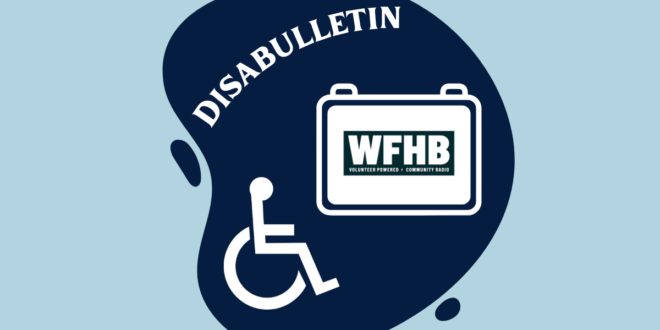Podcast: Play in new window | Download (Duration: 10:08 — 14.0MB)
Subscribe: RSS
Good evening, I’m Abe Shapiro and this is Part IV of Disabulletin’s docuseries Lawyers Schools And Access: The History of Special Education in the United States. Tonight’s installment covers the first parent groups of the United States, who mobilized on behalf of their children in Ohio and Washington respectively.
When we left off we were discussing the case of Golman V Ohio of 1933, in which local student Beldene Golman had been originally excluded from school due to a low IQ, though the was reinstated on appeal by her parents to the Cuyahoga County Court of Appeals. This court ruled that only the Ohio Department of Education rather than the school district, could exclude students with disabilities. However, if the state adapted a rule that students below an IQ of 50 could be excluded, then Beldene could be removed from school due to her disability.
Shortly after winning their case against the Cuyahoga County school board which allowed for their daughter’s reinstatement, the Golman’s helped mobilize parents across the state by establishing a new organization, The Cuyahoga County Council for the Disabled Child on September 17, 1935. According to her book on the history of the organization published in 1970, Council historian Sally Schmidt wrote that the organization had been around informally since 1931, with an operating body of 500 members and prided itself on being “the first organization to work with and for the disabled child living at home with its parents in the community.”
Gary Tonks, president of the Ohio chapter of the disability advocacy organization The ARC of the United States provides a historical look at what the education system was like for children with disabilities in Ohio prior to the council’s founding.
At the same time over 2000 miles away in Washington State, a mass mobilization of parents had come to the surface, unified around a common cause, that of the right of their children with disabilities to be educated alongside non-disabled children. It was now time for their grievances to be heard on the national level.
Since 1890, Washington had made significant progress in special education, albeit with some shortcomings. Although it passed a bill requiring parents to register any child with a disability for school a year after becoming a state, the law was not always enforced, which led to such children being sent to institutions, such as the State Custodial School at Medical Lake near Spokane founded in 1905. However, conditions at this school in addition to its neighbor the Eastern State Hospital (founded in 1907) were appalling,
On October 21, 1935, a year and two months after the Golman case had concluded and a month , a group of parents assembled for a meeting. Disenchanted with the quality of life that their children were receiving at the institutional State Custodial School at Medical Lake, these parents sought reform. This rag tag delegation was led by one James Oakley, whose own son resided at the school and who wanted to provide him along with the children living at the school with forms of entertainment and social resources that were not provided by the state. At this historic meeting, the group declared themselves as committed towards “working on behalf of institutionalized children as the Children’s Benevolent League (CBL). The CBL began to flourish within other communities throughout Washington State. In 1936, the CBL’s expansion exploded, with its articles of incorporation signed in Tacoma on April 15 of that year, officially establishing the CBL. Three months later on June 27, the CBL held its first ever statewide convention and deliberated over the organization’s goals, which would be legislation focused. Fifty delegates from towns throughout the state gathered, qualifying the CBL as a statewide organization. To bring the CBL’s voice to the state government, The CBL’s President Monty Percival ran for the state senate…and won. In the state senate, Percival would be appointed chairman of the State Charitable Institutions Committee and proposed legislation for a second state school for parents on the west side of the state who lived near Tacoma and Seattle and therefore too far from the state custodial school at medical lake.
While the original goal of the organization was to provide resources and improve conditions for children who resided in Washington institutions, it soon became apparent that this a painful choice for parents who felt they were abandoning their children. This change of view by parents resulted in outreach to other organizations throughout the country which included CBL members speaking at major conventions including a notable one in May 1950 sponsored by what was then known as the American Association of Mental Deficiency. Again, Gary Tonks.
But this expansion created some tension between the Seattle and Spokane branches since Seattle wanted to further the CBL’s influence nationwide while the Spokane branch wished to focus on their own children in institutions. This in-fighting would further the split between the two factions as evidenced when members of the Seattle branch won all of the organization’s executive commitee seats at the 1949 convention. This conflict reached its climax on November 20 of that year when, during a meeting between the Seattle and Tacoma regarding the Executive Commitee’s amending the CBL’s constitution to focus on national expansion, Seattle leader Bob Levitt stood up and said;
“More disturbing than the subjects of controversy at this meeting was the lack of cooperation received at all times on all issues from the east side due to the difference of subjective and objective thinking. That is, the west side is interested in the far-reaching ideal of research and pursuing a progressive course towards better care and aid for ALL handicapped children, not only our own in the schools…with or without you we are going to accomplish our purposes as long as we have a prayer in our hearts and breath in our bodies to do so!”
Two years later, the Spokane chapter filed for dissolution of its own chapter but would eventually agree to work alongside the Seattle sect, under the new organization now known as the WARC.
In our next installment, the shift towards the inclusion of children with disabilities continues as parents of the ARC of the United States and its chapters across the country begin a unified set of battles for their children’s right to a public education
Special thanks to Gary Tonks, President of the Ohio Chapter of the ARC of Ohio for his contributions!
Additional information on the ARC of Washington was gathered from Larry Jones’s 2010 book Doing Disability Justice.
*Correction: Washington became a state in 1889 and the Compulsory Education Act was passed in 1890 which required parents to send students with disabilities to the State School for Defective Youth. Something to keep in mind as well about this law: If parents or school district officials did not report on a child’s progress in school, they could be fined up to $200, which would be exactly $6,633.76 in today’s money! https://www.officialdata.org/us/inflation/1890?amount=200
 WFHB Bloomington Community Radio
WFHB Bloomington Community Radio


